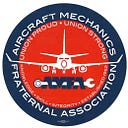Safety in the Air Begins with Quality Maintenance on the Ground
We don’t take planes out of service for trivial, cosmetic reasons
Southwest Airlines recently filed a lawsuit in Dallas against the Aircraft Mechanics Fraternal Association (AMFA), the union that represents aircraft maintenance personnel at Southwest. Case 3:19-CV-00514-G filed 02/28/19. The action was filed in the United States District Court for the Northern District of Texas listing Southwest Airlines Co. as the Plaintiff versus AMFA Airlines Representatives, AMFA Legal Counsel; AMFA National Director, and the Aircraft Mechanics Fraternal Association as Defendants.
AMFA has always stated that the Company has failed to comply with FAA mandates requiring the development of a culture of safety. Indeed, both the FAA and Southwest itself have confirmed that the carrier has a checkered history, including the operation of unairworthy aircraft in revenue service. Nevertheless, Southwest bases its litigation on an increase in aircraft damage reports, and seeks a court order that will effectively require union representatives to tell aircraft mechanics that compliance is unlawful.
Southwest’s complaint (reference pages 13–14, paragraph 53) states, “A maintenance write up is recorded by a mechanic when in course of job duties he/she encounters a defect or condition that requires additional inspection or repair under Southwest’s maintenance standards. While write ups may be for a trivial or cosmetic defect, such as tape on cargo bins or broken arm rests, and can be repaired at a later date. If an aircraft receives a sufficient number of maintenance write ups, the time required to repair the defects can result in the plane being removed from service.”
Southwest is, however, complaining about damage reports that concern items that could impact on aircraft operational safety, not reports of trivial or cosmetic flaws. Of special concern are reports involving fire precautions. Let’s look at Aircraft Maintenance Manual (AMM) Task 25–52–00–200–803 (737–600/700/800/900):
2. Forward Cargo Compartment Liner Inspection
A. General
(2) It is important that all of the fasteners, seams, and punctures are sealed correctly to keep the amount of oxygen in the compartment to a minimum.
D. Procedure
(1) Make sure that there is no loose or damaged tape at the joints for the ceiling liner, sidewall liner or bulkhead liner. If there is loose or damaged tape: do this task: Loose or Damaged Tape Repair, Task 25–52–01–300–803.
Southwest Airlines Know Before Fix October 24, 2018
Carefully follow the taping instructions found in 737 NG AMM 25–52 (MAX AMM 50–10) to ensure the tape remains properly adhered and maintains the sealed integrity of the cargo compartment.
It is deeply concerning that some of the highest rungs in the ladder of the executive levels at Southwest Airlines view the importance of cargo tape as trivial or cosmetic. Contrarily, the importance of fire safety precautions, like cargo tape, was created as a result of historical damage and even the loss of life. Following a cargo fire on American Airlines Flight #132 cargo fire in 1988 in Nashville, TN, the NTSB recommended the FAA require smoke and fire detection systems for cargo compartments. Afterwards in 1996, the ValuJet Flight #592 crash outside in the Florida Everglades killing 110 people on board was due to a cargo compartment fire started by improperly stored oxygen generators by contract maintenance employees of SabreTech. Subsequently in 1998, the FAA required the airlines to have all Class D cargo holds to be retrofitted with fire detection and suppression equipment by early 2001.
So that history does not repeat itself, Aircraft Maintenance Technicians (AMTs) have a responsibility to properly follow the maintenance manual to ensure the fire suppression system is fully functional, including the proper taping of the cargo bins.
AMFA continues to place great value on being on the forefront of safety rather than on the backend of an investigation with the FAA & NTSB. However Southwest continues try to prevent the reporting of damage as defined by its own Maintenance Procedural Manual (MPM) Chapter 05.02. Additionally, Southwest’s Continuous Aircraft Maintenance Program (CAMP) also contains provisions to defer certain defects by utilizing a Minimum Equipment List (MEL), to include certain items in the cabin. The MEL provides clear limitations and timeframes for which items may be deferred.
Any licensed aircraft mechanic that works for an airline must document observed discrepancies as mandated by Federal Aviation Regulation 121.701(a), which states the following: “Each person who takes action in the case of a reported or observed failure or malfunction of an airframe, engine, propeller, or appliance that is critical to the safety of flight shall make, or have made, a record of that action in the airplane’s maintenance log.”
We ask that Southwest Airlines CEO Mr. Kelly not force his AMTs to choose between reporting aircraft damage and being sued. Additionally, we ask Southwest to ensure all international flight pre-departure ETOPS inspections be performed by the highly trained and FAA licensed AMFA AMTs of Southwest Airlines.
